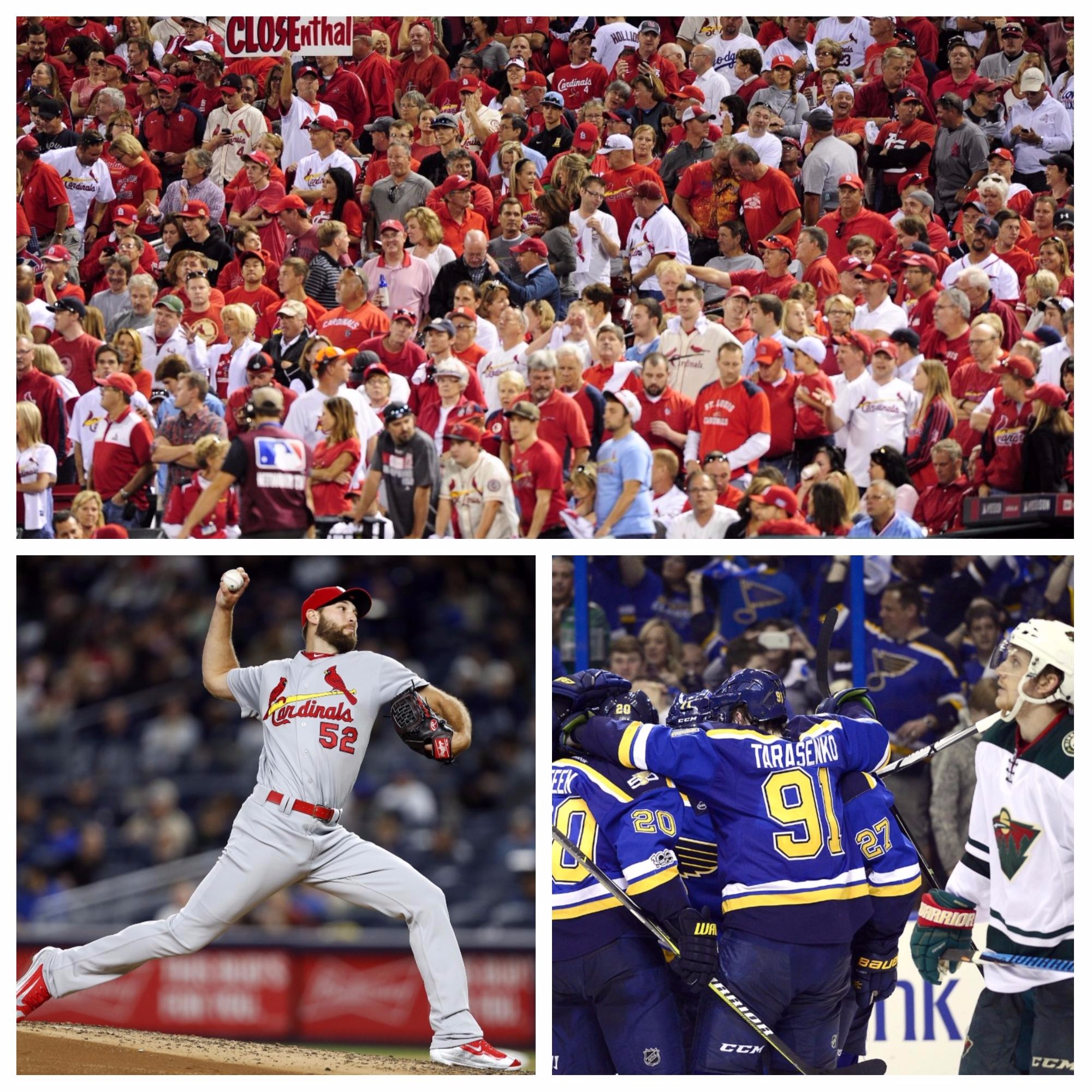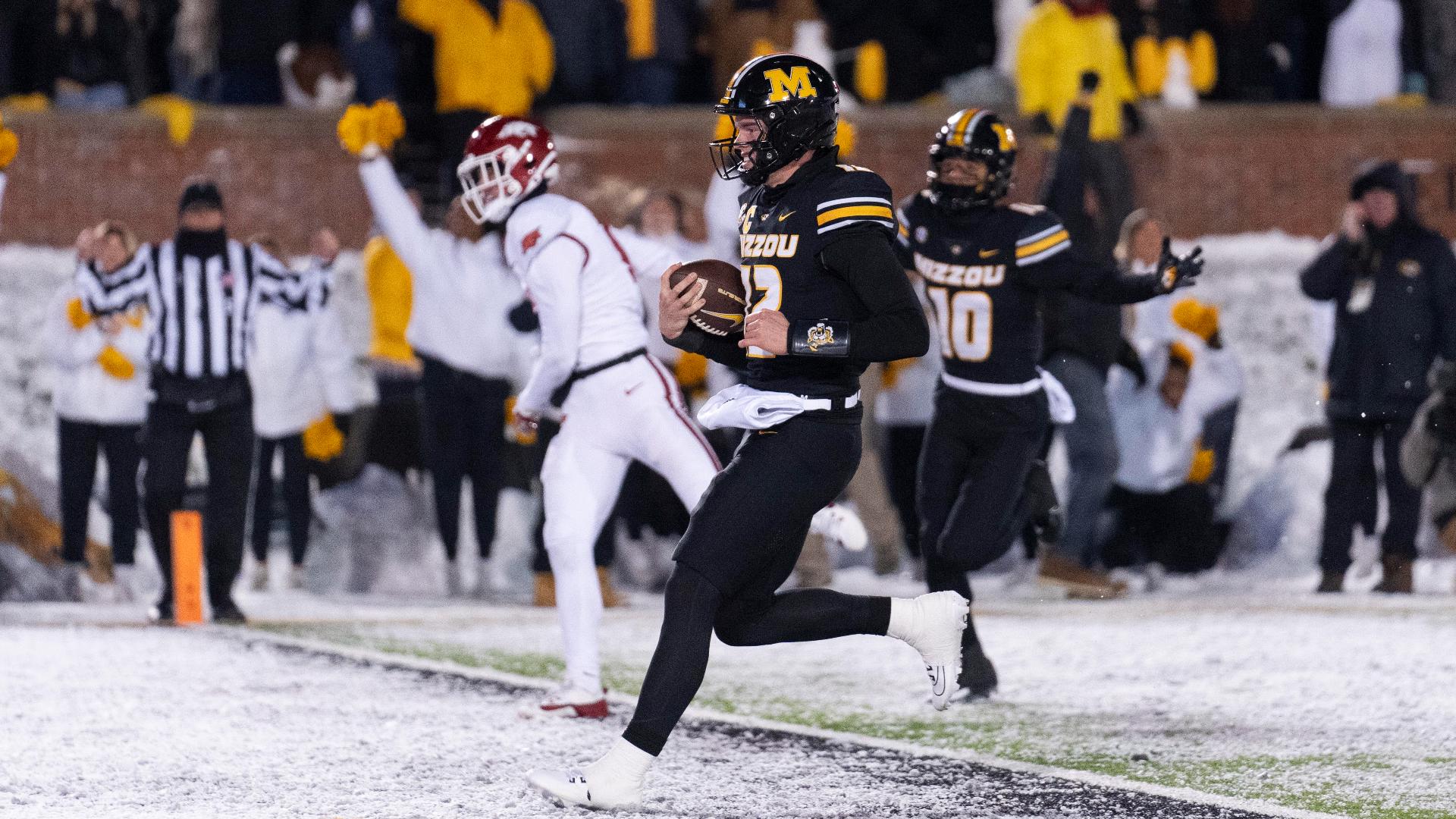Today, let’s talk about lessons learned (or not), new ideas, and another thought I have swirling in my head.
The Blues
First, the Blues. Big night tonight, what with the opportunity to close out Minnesota and advance to the second round. The Men of Note haven’t swept a playoff series since 2001, by the way. But the lesson I mentioned has to do with tonight’s game. The nucleus of this team has been through growing pains over the past several years; initially, getting to the playoffs; secondly, learning how to win a playoff series, and they got over that hurdle last year when they won two. Now, the next lesson comes from last year’s experience.
In both series, against Chicago and then Dallas, the Blues built 3-1 series leads, only to be forced to play Game Sevens. Dramatic as those winner-take-all games are for everyone, Ken Hitchcock explained to me this fall that they cause a team to expend a lot of mental energy. So by losing four potential series-clinching games and even though they won both of those Game Sevens, the team was unnecessarily drained of mental energy when it came time to meet the Sharks. They just didn’t have the extra jump San Jose had, and as tough as that team was they lost in six games.
So did the remaining Blues -- the Pietrangelos and Steens, the Allens and Tarasenkos, the Berglunds and Bouwmeesters – learn the lesson from last year and impart that on the younger, newer Notes? That is, don’t let the wild back in the series – step on their throats now that you have the chance. Another home game puts money in the coffers, but it was always my understanding that a team doesn’t start making a profit until the second round, so let’s get there sooner.
The Cardinals
Now to the Cardinals, and we have an actual winning streak now – first time in three weeks Cardinal fans can say that. Michael Wacha tries to make it three in a row; he’s going to also try for the third straight solid outing by the day’s starter; Lance Lynn, no earned runs over seven innings; Mike Leake, one in six and-a-third.
What we’ve seen out of Wacha has been encouraging, a 3.00 ERA over his first two starts that have averaged six innings. But as Cardinal observers can point out, it seems the clock is ticking toward an inevitable conclusion: at some point, Wacha’s shoulder issues will ignite and his season will be done. The most innings he’s ever thrown in the majors is 181.1 in 2015, so when might the same issue flare up this season? It’s easy to be encouraged, given the way he’s looked since he took the mound in Florida; but there’s that little voice in my head that says be wary of the Ides of July, so to speak, when the innings total pushes the needle into the red.
Which brings me to the story I read about the Dodgers, and their plan to use as many as twelve starting pitchers to try and get to October in first place. Several of their pitchers have medical histories, and others are question marks, but the prevailing thought seems to be if we can keep five healthy at any one time we’ll be fine. So it will be a merry-go-round of arms rotating between the disabled list, Triple-A, and yes, the rotation. There is hope that by being able to keep the innings total of ace Clayton Kershaw down, that he’ll be fresher and more dynamic come the postseason.
Interesting. What better way to keep Wacha healthy through a full season than to spread the 140-170 innings he might throw over the course of the entire season instead of having to shut him down in August?
Well, no team spends like the Dodgers, who can afford to keep twelve starting arms on their payroll. And the other problem exists that the Cardinals don’t have that stock of arms ready to pitch at the major league level. As it stands now, Lynn will be counted on to be a stalwart of the rotation a year removed from Tommy John surgery; with Adam Wainwright as an example, there is a waiting period of a full season after the surgery before a Tommy John pitcher can expect to be back at his peak level, so there’s a thin tightrope to be walked. Speaking of Wainwright, who knows if we’ve seen the last of his effectiveness as a rotation guy? So with Wacha, Lynn and Waino as question marks, that leaves Leake and Carlos Martinez. Beyond that quintet, tell me who is the next man up? Tyler Lyons is progressing and may be ready soon, but the same can’t be said for Marco Gonzales, Luke Weaver or Sandy Alcantara. (We’re not ready to rush Alcantara to the bigs yet, right?)
So it’s a great thought to be able to give Wacha periodic rests to stave off his shoulder issues, but it’s just not practical.
Futzing with the game
As I get older, I harken back to the days of the two-and-a-half hour baseball game. The smarter heads of the game have been wracking their brains trying to keep their game interesting, but how can you do that with endless pitching changes, and games that extend well beyond three hours. That’s better for beer sales (even with the seventh inning cutoff), but trends the game itself into the grinding, almost boring stage. What is the real problem here?
The Three True Outcomes
Have you listened to Brian Kenny of the MLB Network talk about the Three True Outcomes in baseball? Essentially, it’s the three ways the game progresses without the ball reaching a fielder’s glove: strikeouts, walks, and home runs. Brilliant in it’s simplicity. Well, if you dig deep into the history and stats (aren’t you glad there are computers and number crunchers who do the real work on this?), the game is sliding into a bad place. Thanks to The Baseball Network’s research, I can tell you that in 1927 (think Babe Ruth and 60 home runs) the Three True Outcomes totaled sixteen percent of an average game. Largely because of the proliferation of home runs, that percentage had risen to 25-percent by 1992. One out of four batters never got the defense involved; not impressed?
I was always fascinated by strikeout pitchers: Bob Gibson, Tom Seaver and Nolan Ryan in particular. Thanks to everyone, it seems, popping the mitt at 95 MPH or more and the specialization of arms now in the game, high strikeout-per-inning rates aren’t uncommon anymore; teams are averaging nearly nine strikeouts a game. So, by extension, eighteen of a game’s 54 outs come without the hitter touching the ball. Doesn’t quicken the pulse of anyone sitting in the seats, does it?
Hitters are now told to not worry about high strikeout totals in pursuit of the inning changing three-run homer - it’s just another out. Moneyball thinking craves walks, so batters are also trained to work the pitch count and draw walks, and the home run has never been in higher demand. Add all that together, and you get (so far in 2017) a 33.6-percent TTO ratio – one in three batters now don’t put the fielders to work. Singles – the simple base hit – now make up only five percent of a game.
As the NFL continues to pump up the excitement, distancing themselves as the clear cut favorite U.S. spectator sport, baseball – The National Pastime – is silently creeping toward a chess match in terms of raising the pulse of the fan. It’s an insidious thing – and purist baseball lovers hate when statistics and sabermetrics work their way into the conversation – but the lack of balls in play in major league stadiums is silently killing the game. And the brains in MLB think that waving a batter toward first base instead of the four-pitch intentional walk is the first way to go in speeding up the game?
Chew on that, and I’ll see you back here tomorrow.


